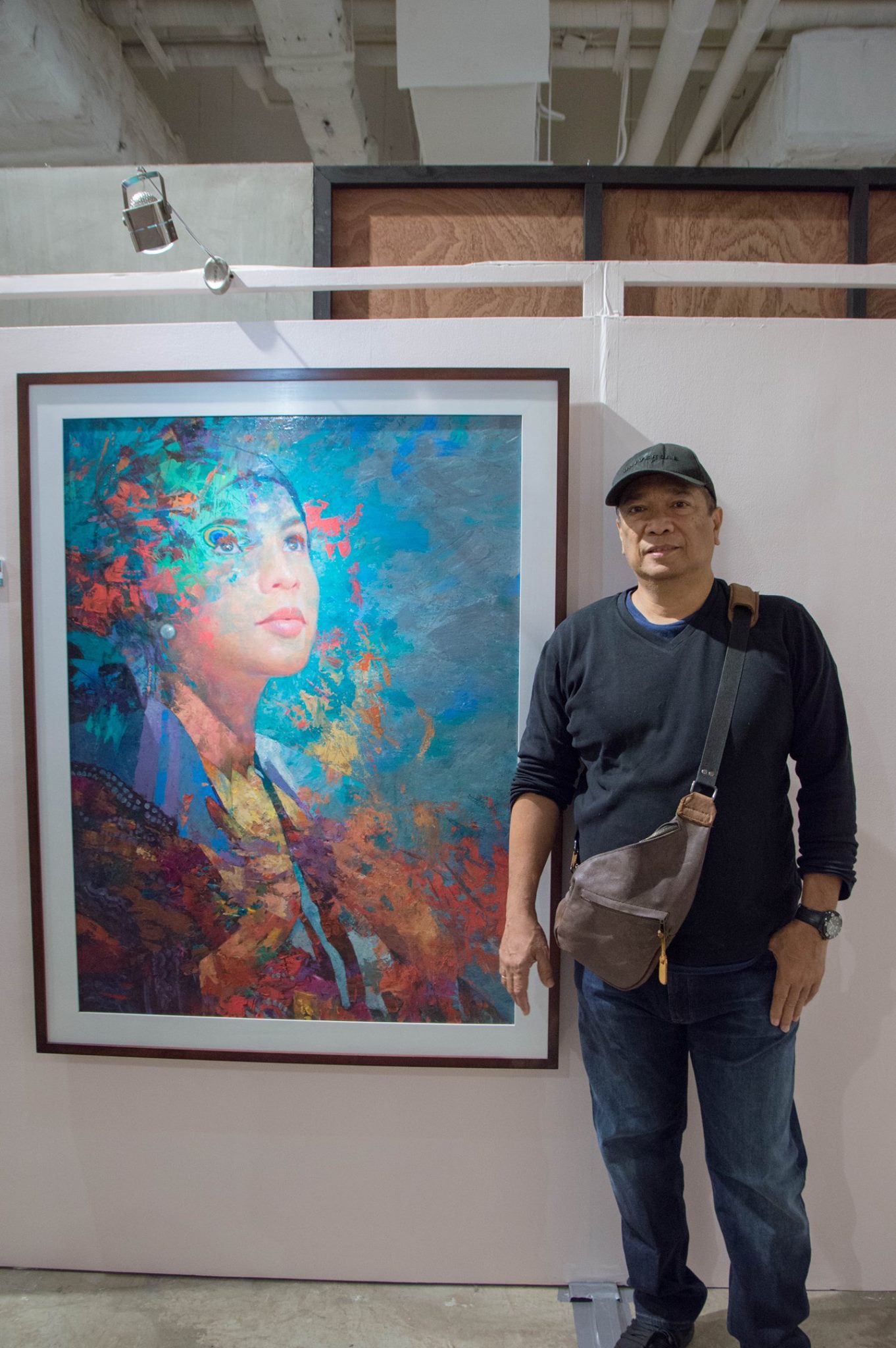Artists
Artworks Gallery
Carlo Magno
Carlo Magno took up architecture for a year at the Mapua Institute of Technology then moved to the Philippine Women’s University (PWU), as a fine arts student majoring in advertising.
It was an art auction in 1980 that had inspired him to take up painting, influenced by PWU alumni Prudencio Lamarroza and Rafael Cusi. In the same year, he won first prize in a YMCA-sponsored painting competition, titled “Bayanihan.” He was also conferred by PWU the Outstanding Leadership Award for his contributions to the Likarla Artist Group. The following year, he won the Grand Prize in the Hispanidad Art Contest sponsored by the Spanish Embassy and held his first solo exhibit at the Greenhills Art Center.
Magno has made a name early in his career; painting subjects of old houses, antique furniture and cultural artifacts. In a hyperrealist manner, Magno captures the spirit and ambience of well-appointed homes, churches with spacious interiors and sprawling gardens, emblematic of his generation’s nostalgia for the past. This was the style he immersed himself in until the 1990s, when he had two solo shows, at the Ayala Museum Gallery (1990) and the Madrigal Art Center (1992).
In 2003, Magno made the difficult yet epochal transition from figuration to abstraction in an exhibit titled “Transformation,” at the Galerie Joaquin, mounting large-scale abstract pieces in luminous red hues with gestural brushstrokes on surfaces that allude to the controlled accident. Here, he incorporated, in strong textures, intense light sources, elements of Oriental abstractionism, such as calligraphy and the inherent materiality of medium.
Aside from the abstract works, predominantly in red, tempered with shades of grey, metallic copper and bronze, and daubs of black, Magno also does sculpture, with his trophy-sized pieces in stainless steel, of predominantly geometric forms, exuding a strong eloquent statement and distinctive for their utter simplicity reflecting the artist’s evolving aesthetics.
Hailed by critics as a “master of light,” Carlo Magno celebrated golden moments with the exhibit “Opulence” at Galerie Joaquin Podium in January. As he turned 50, he said, “It is great to be 50 and exploring a world of endless possibilities. I am continuously evolving, I don’t want to be boxed in.”
To date, Magno is gearing up 2011 with a major show in SM Art Center this July.

